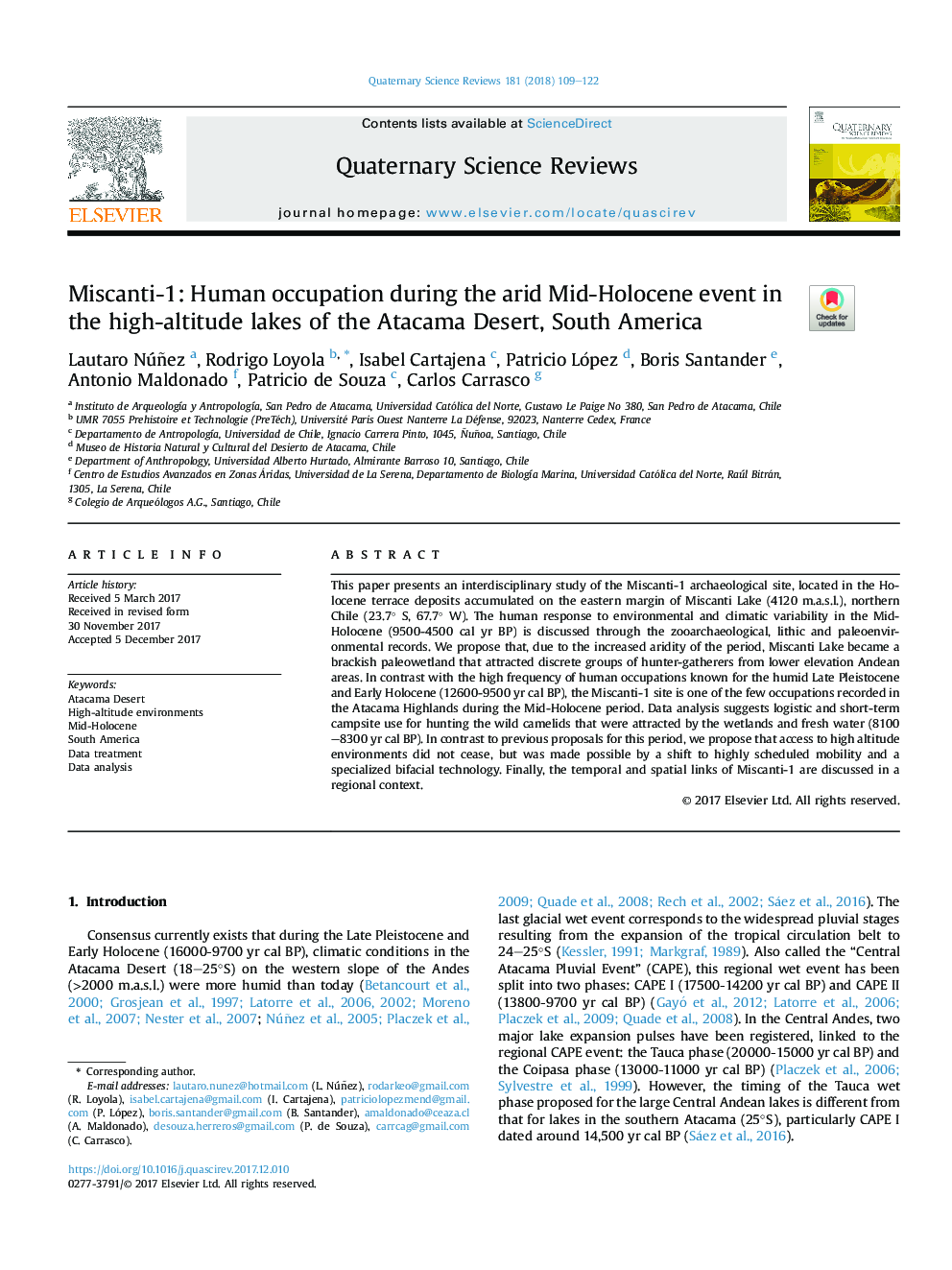| Article ID | Journal | Published Year | Pages | File Type |
|---|---|---|---|---|
| 8915014 | Quaternary Science Reviews | 2018 | 14 Pages |
Abstract
This paper presents an interdisciplinary study of the Miscanti-1 archaeological site, located in the Holocene terrace deposits accumulated on the eastern margin of Miscanti Lake (4120 m.a.s.l.), northern Chile (23.7° S, 67.7° W). The human response to environmental and climatic variability in the Mid-Holocene (9500-4500 cal yr BP) is discussed through the zooarchaeological, lithic and paleoenvironmental records. We propose that, due to the increased aridity of the period, Miscanti Lake became a brackish paleowetland that attracted discrete groups of hunter-gatherers from lower elevation Andean areas. In contrast with the high frequency of human occupations known for the humid Late Pleistocene and Early Holocene (12600-9500 yr cal BP), the Miscanti-1 site is one of the few occupations recorded in the Atacama Highlands during the Mid-Holocene period. Data analysis suggests logistic and short-term campsite use for hunting the wild camelids that were attracted by the wetlands and fresh water (8100-8300 yr cal BP). In contrast to previous proposals for this period, we propose that access to high altitude environments did not cease, but was made possible by a shift to highly scheduled mobility and a specialized bifacial technology. Finally, the temporal and spatial links of Miscanti-1 are discussed in a regional context.
Related Topics
Physical Sciences and Engineering
Earth and Planetary Sciences
Geology
Authors
Lautaro Núñez, Rodrigo Loyola, Isabel Cartajena, Patricio López, Boris Santander, Antonio Maldonado, Patricio de Souza, Carlos Carrasco,
